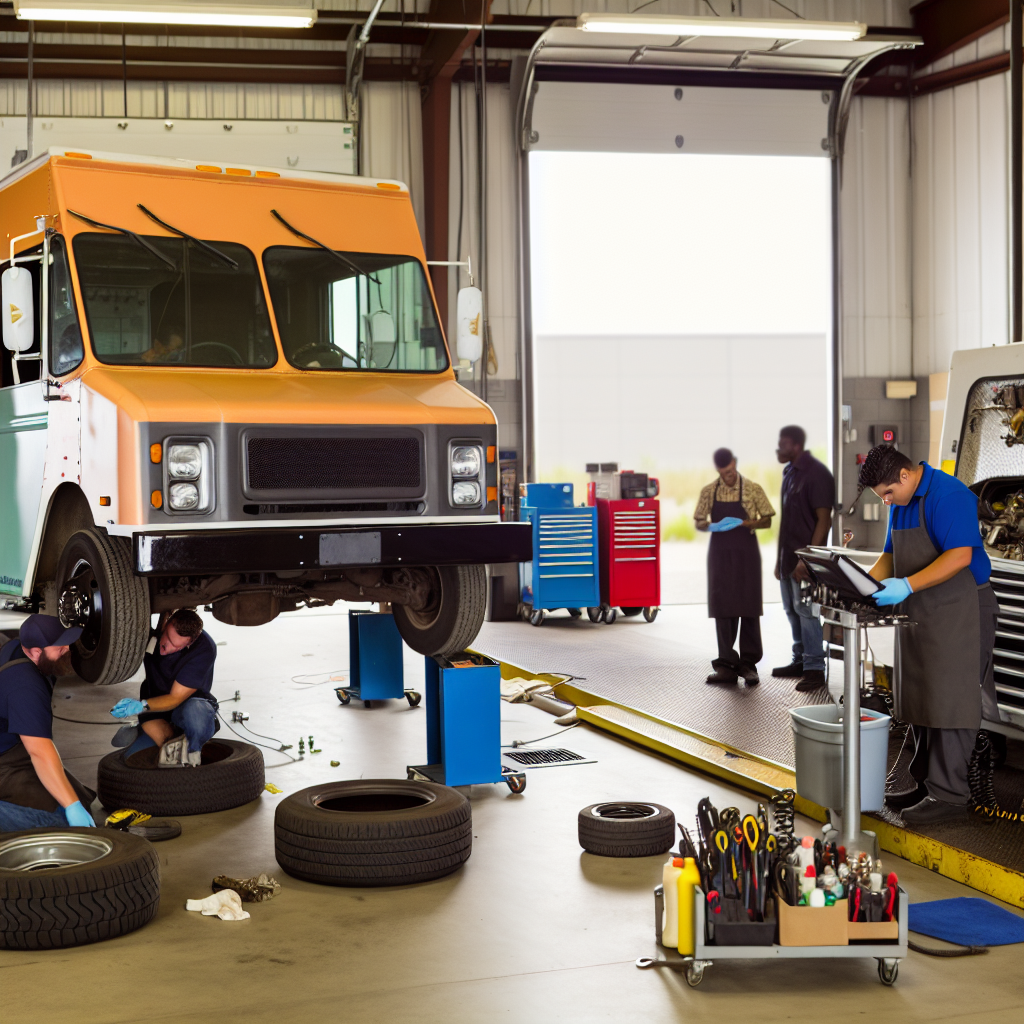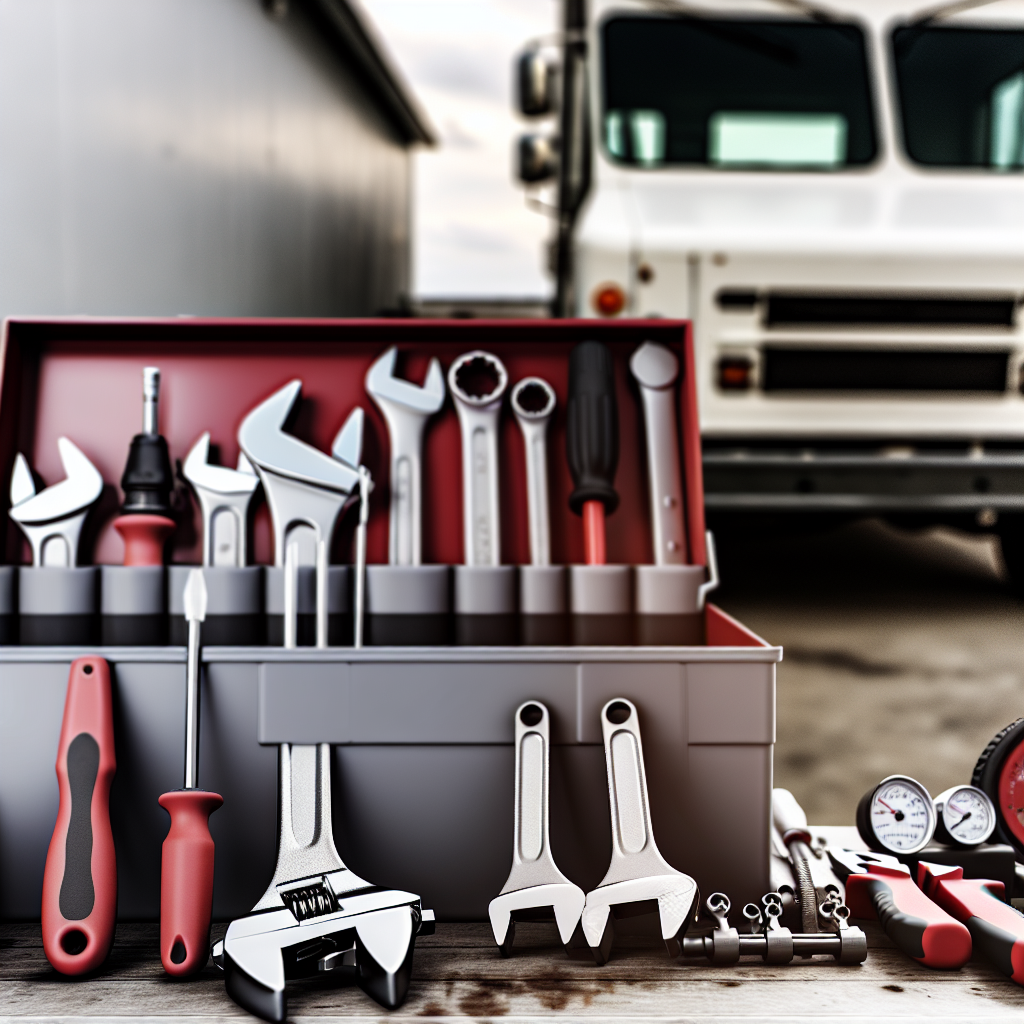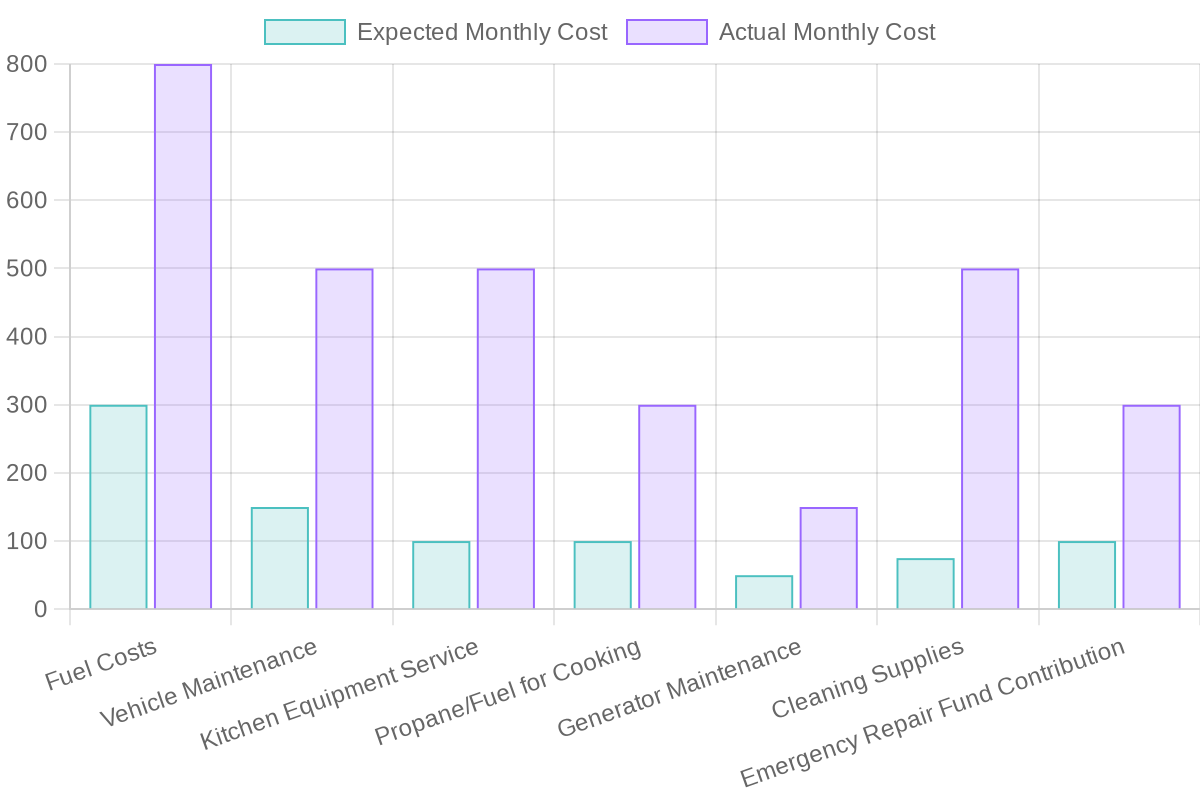In the dynamic world of food trucks, where culinary delights meet mobile entrepreneurship, the importance of meticulous planning for maintenance and repairs cannot be overstated. Unexpected breakdowns and repairs can strike at the worst possible moment, jeopardizing not only the daily operations but also the financial stability of a food truck business. Imagine the frustration of a missing appliance at a bustling food festival or an engine failure on a busy weekend night. Such incidents can lead to lost sales, potential customer dissatisfaction, and unforeseen repair expenses that could drain your hard-earned profits.
To ensure that the wheels of your culinary venture keep turning smoothly, it is essential to prioritize proactive maintenance strategies and create a financial cushion for emergency repairs. By doing so, food truck owners can protect their investments, maintain operational consistency, and ultimately thrive in this competitive landscape.


Article Outline: Planning for Maintenance and Unexpected Repairs in Food Trucks
-
Introduction
Overview of the challenges faced by food truck owners related to maintenance and unexpected repairs.
-
Routine Maintenance
Discussion on the types of maintenance required, frequency, and potential costs involved.
-
Emergency Repairs
Importance of being prepared for unexpected breakdowns and strategies for quick repairs.
-
Budgeting for Repairs
Tips on creating a financial plan, how to allocate emergency repair funds, and managing ongoing expenses.
-
Tips for First-Time Owners
Practical advice and insights for new owners to manage their food truck finances and maintenance effectively.
-
Conclusion
Recap of the significance of planning for maintenance and repair as a food truck owner.
Importance of Maintenance Planning:
Having a good food truck maintenance schedule is important to prevent surprise costs and keep things running smoothly. By saving $50 to $150 each month, food truck owners can prepare for emergency repairs, adding up to $600 to $1,800 a year. This practice helps keep the truck safe and running well. A preventive maintenance plan helps find problems early, which can stop bigger issues from happening. Regular checks and small repairs can save money in the long run and help the food truck last longer.
Emergency Repairs in Food Trucks
Unexpected repairs in food trucks are challenging yet critical issues that can jeopardize daily operations and lead to financial losses. As mobile kitchens, food trucks are prone to a range of mechanical problems that can arise suddenly and without warning. Understanding what counts as unexpected repairs and how to effectively manage them is essential for maintaining smooth operations and ensuring customer satisfaction.
Common Types of Unexpected Repairs:
- Engine Failures: Problems such as overheating or timing belt issues can halt service unexpectedly, resulting in repair costs of $800 to $3,000.
- Generator Malfunctions: Generator failures can lead to stop service permanently, costing $500 to $2,500 to repair and causing losses in sales.
- Refrigeration Failures: If the refrigeration system fails, it can endanger food safety and result in repair costs between $400 to $1,500, with food loss potentially costing another $300 to $1,000.
- Brake Emergencies: Brake system issues can pose severe safety risks, with repairs ranging from $500 to $1,500.
- Tire Blowouts: Emergency tire replacements typically cost between $200 to $400, and damage can increase costs further.
- Electrical Failures: These can result in significant downtime, costing $300 to $1,200 to repair depending on the malfunction.
Strategies for Handling Unexpected Repairs Effectively:
- Regular Maintenance: Implementing a preventive maintenance schedule can help catch issues before they escalate, reducing the likelihood of unexpected failures. This includes daily checks and seasonal inspections to ensure all systems are functioning properly.
- Financial Cushion: Set aside 5-10% of your annual revenue specifically for emergency repairs. This financial planning will provide a buffer that can be accessed quickly without impacting day-to-day operations.
- Emergency Repair Kits: Keeping an emergency kit on hand with essential tools and spare parts can alleviate minor issues before they require professional help.
- Professional Relationships: Build partnerships with local mechanics or mobile repair services so that you have immediate help available when emergencies arise. This can significantly reduce downtime.
- Training Staff: Ensure that your staff is trained to identify potential mechanical issues and perform routine maintenance checks. This knowledge can help in recognizing problems early on and reacting promptly.
Conclusion:
By proactively preparing for unexpected repairs and implementing these strategies, food truck owners can maintain operational efficiency and protect their investment while also enhancing customer satisfaction.
Statistics on Food Truck Repair Costs
Planning for maintenance and unexpected repairs is vital in the food truck industry, especially given the financial implications. Recent statistics show:
- Monthly Repair and Maintenance Costs: Food truck owners can expect to pay between $500 to $1,000 each month, which constitutes about 7-12% of their gross revenue.
- Annual Maintenance Costs: Yearly expenses related to routine maintenance, including oil changes and brake inspections, generally amount to between $2,000 to $5,000.
- Emergency Repair Costs: When faced with unexpected breakdowns, repair costs can be significant. For instance:
- Engine Repairs: Costs can range from $800 to $3,000.
- Generator Repairs: These may fall between $500 and $2,500.
- Financial Recommendations: It is advisable for owners to allocate 5-10% of their total annual revenue specifically for maintenance. Additionally, establishing an emergency repair fund of $5,000 to $10,000 is recommended to effectively manage unforeseen repair costs.
This proactive financial planning not only aids in maintaining operational continuity but also fosters long-term sustainability in a competitive market.
Tips for Budgeting for Maintenance and Repairs
Budgeting for maintenance and repairs is critical for first-time food truck owners to maintain vehicle performance and avoid financial pitfalls. Here are several practical tips to help you plan effectively:
-
Establish a Maintenance Fund:
Aim to allocate a portion of your revenue each month to a dedicated maintenance fund. This could be around 10% of your monthly income. This fund should cover routine maintenance costs, such as oil changes, tire rotations, and inspections, ensuring you’re prepared for scheduled services.
-
Create an Emergency Repair Reserve:
Set aside an additional amount for unexpected repairs. A good target is between $5,000 to $10,000, which should provide a comfortable cushion for significant repairs like engine or generator issues. Adopting the 5-10% rule for your annual revenue can help back this fund.
-
Document and Track Costs:
Maintain detailed records of all maintenance and repair expenses. Keeping receipts and documenting services allows you to analyze patterns in costs, helping you predict future expenses accurately.
-
Anticipate Major Repairs:
Research common repairs related to your specific truck model and plan for them financially. For example, if brake replacements or generator repairs are frequent for your truck, ensure your budget reflects those potential costs.
-
Schedule Regular Inspections:
Regular inspections may help you catch small issues before they become expensive repairs. Include costs for preventative maintenance in your budget, as it’s generally less costly than emergency fixes.
-
Budget for Seasonal Variations:
Understand that some months will incur higher expenses due to seasonal operations (like increased fuel consumption). Adjust your budget to plan for these peaks, especially if your truck is in heavy use during certain times of the year.
-
Negotiate Repair Costs:
Build relationships with local mechanics for better rates or discounted services. Many mechanics may be willing to offer lower prices for loyal customers, helping you save on costs in the long run.
-
Review and Adjust Regularly:
Regularly review your budget allocation for maintenance and repairs. Adjust based on spending trends and repair frequency to ensure your budget remains accurate and reflective of your actual needs.
By implementing these budgeting strategies, first-time food truck owners can better manage maintenance and repair costs, ultimately ensuring their business runs smoothly and efficiently without financial strains.
| Maintenance Task | Average Cost |
|---|---|
| Tire Replacement | $200 – $400 |
| Engine Check | $100 – $300 |
| Routine Inspection | $100 – $200 |
| Brake Check | $100 – $450 |
| Oil Change | $50 – $150 |
| Transmission Service | $150 – $300 |
| Refrigeration Check | $250 – $1,500 |
| Electrical Inspection | $50 – $200 |
| Generator Check | $100 – $500 |
| Fluid Check | $75 – $150 |
Conclusion
In the competitive landscape of food trucks, planning and financial preparedness are pivotal to success. Navigating the intricacies of ownership entails understanding the ongoing expenses that go beyond the initial investment. As discussed, establishing a dedicated maintenance fund and an emergency repair reserve can safeguard against unexpected financial burdens. Routine maintenance not only enhances the reliability of your vehicle but also minimizes the risk of costly repairs down the line.
However, it is crucial to understand the emotional and financial stakes involved. Neglecting maintenance can lead to devastating consequences, including sudden breakdowns that disrupt business operations and erode customer trust. Each lost day of service translates to lost revenue and disappointed customers who may choose to seek their culinary delights elsewhere. As food truck owners, your passion fuels your business, and your commitment to quality service must extend to the care of your vehicle.
By staying organized, documenting expenses, and adjusting budgets according to seasonal variations, food truck owners can effectively manage their finances.
In conclusion, proactive planning is not just about keeping your truck operational; it’s about preserving your dreams and ensuring that your culinary business remains resilient in the face of challenges. Embracing these strategies will empower food truck owners to thrive, serving delicious meals while maintaining the health of their investments and their connections with their customers.

This chart illustrates the comparison between expected and actual repair costs for food trucks in various categories, reflecting the challenges first-time owners face in budgeting effectively. Visualizing this data helps to emphasize the differences that can occur between planned expenses and actual costs incurred, especially in areas critical to food truck operations.
Key Insights from the Chart:
- Fuel Costs: The expected monthly fuel costs range from $300 to $600, but actual costs can surge to $800 based on driving patterns.
- Vehicle Maintenance: A budget for routine maintenance can often fall short. The expected monthly maintenance cost is $150 to $500, yet actual spending can match the higher end of that range, highlighting the need for better financial planning.
- Kitchen Equipment Service & Cleaning Supplies: These often neglected areas can also lead to unforeseen expenses that require owners to adapt their budgets.
This visual will greatly aid readers in understanding the financial reality of owning and operating a food truck while encouraging proactive planning for repairs and maintenance.
Outbound Links for Industry Standards and Financial Management
- Maintaining Food Truck Equipment:
- Hood System Cleaning – Importance of regular cleaning to prevent grease buildup.
- Vehicle Upkeep Maintenance Tips – Guidelines for routine vehicle inspections and care.
- Food Handling Procedures – Best practices for ensuring food safety.
- Health and Safety Compliance:
- Sanitation Practices in Food Trucks – Daily routines for maintaining a hygienic environment.
- Efficient Operations Management:
- Location Strategy – Selecting optimal locations for service based on traffic patterns.
- Staff Scheduling Techniques – Strategies for managing staff effectively.
- Financial Management for Food Trucks:
- Financial Management Articles – Best practices for tracking and managing food truck finances.
- Emergency Fund Recommendations – Setting aside revenue for unforeseen challenges.
- Maintenance Budget Guideline – Allocating funds for maintenance and repairs long term.
- Use of Accounting Software – Automating bookkeeping and sales tracking.
By incorporating these outbound links, food truck owners can access valuable industry insights and enhance their operational strategies, ensuring a more robust foundation for their business endeavors.


